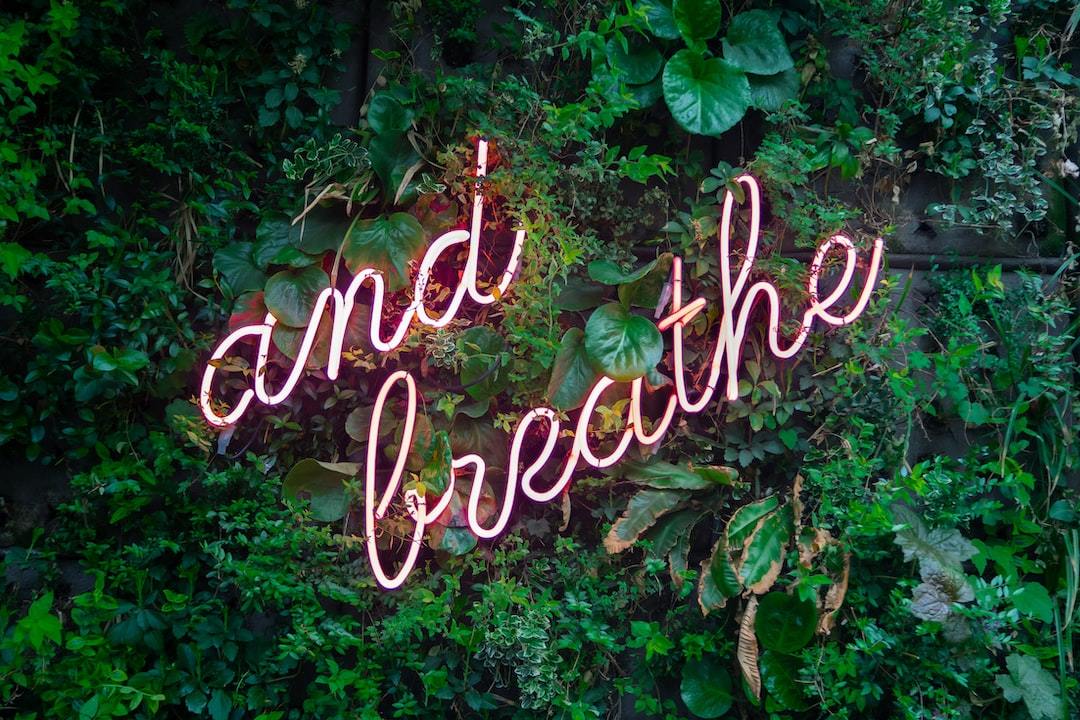Coming Soon: E-book about Kundalini Yoga - Sign up here to be among the first to get it!
Ever found yourself caught in the ebb and flow of daily stress, gasping for a moment of peace? That’s where pranayama steps in—think of it as your life raft. When you start to dip into these ancient breathing techniques, it’s like unlocking a secret chamber within that houses calmness and clarity.
“Am I taking full breaths?” You might ask this as we dive into the art of controlling our vital energy through breath. Picture each inhales painting vitality across your body canvas and every exhale erasing tension stroke by stroke.
I’ve been there; at first, my own attempts felt more like awkward splashes than graceful strokes. But stick with me—you’ll soon be navigating the currents effortlessly, crafting an inner sanctuary one breath at a time.
Curious about how you can tailor this practice to fit your rhythm or why nostril nuances matter? Keep reading—we’re just getting warmed up!
Table Of Contents:
- The Essence of Pranayama in Yoga Practice
- Pranayama’s Impact on the Mind-Body Wellness
- Mastering Pranayama Techniques
- Timing Your Pranayama Practice for Optimal Results
- Customizing Your Pranayama Experience
- The Physiological Science Behind Nostril Breathing Techniques
- Deepening Your Knowledge with Pranayama Literature
- FAQs about Pranayama Breathing Techniques and Benefits
- Conclusion
The Essence of Pranayama in Yoga Practice
Defining Pranayama and Its Place in Yoga
Pranayama is generally recognized as the practice of breath control, a significant component of yoga that has been around for millennia. When we explore pranayama’s place in yoga today, we find it has evolved from ancient rituals to a modern practice for enhancing well-being. The word itself breaks down into “prana” meaning life force or vital energy, and “yama” which means control. Together, they form a cornerstone concept in Kundalini Yoga Vibe: mastering your life force through breath.
Diving deeper than simple breathing exercises, pranayama involves rhythmic patterns and techniques that are believed to influence the flow of energy throughout the body. It stands at the crossroads where the mind meets the body meets the spirit; this makes it more than just a physical practice—it’s a bridge to higher consciousness.
To grasp its essence requires firsthand experience—feeling the subtle changes within when you alter your breathing patterns can be transformative. From calming anxiety to sharpening focus, those who regularly include pranayama in their routine may unlock benefits beyond basic relaxation.
Breath Control: The Gateway to Vital Energy
But why do yogis give so much importance to controlling their breath? Breath is our most immediate source of energy—every cell relies on oxygen from deep inhales for survival and carbon dioxide expulsion during exhales as detoxification. By consciously regulating these processes through various breathing techniques, practitioners aim to optimize this exchange—to fuel every action with intentionality.
In kundalini teachings specifically, adept use of yoga breathing methods and breath control serves not just physical needs but also helps awaken latent spiritual energies within us—the famed ‘kundalini’ power lying dormant at our spine’s base awaits arousal by mastery over our inhalations and exhalations.
This isn’t esoteric knowledge locked away for ascetics alone; anyone can learn these practices under guidance—and witness shifts both inside out—from enhanced lung capacity, reduce stress, increased brain function, enhanced cognitive performance, and emotion regulation. All these benefits leading up towards greater resilience against perceived stress affecting overall quality-of-life improvements noticeable even after short-term commitment toward regular practice sessions each week or month depending upon individual capability & goals set forth initially before starting off on such journeys inwardly directed seeking outward manifestations thereof eventually.
Pranayama, the art of breath control in yoga, goes beyond simple breathing to optimize your body’s energy exchange and tap into a higher state of consciousness. Regular practice can sharpen focus, calm anxiety, and even awaken spiritual energies.
Pranayama’s Impact on the Mind-Body Wellness
The Psychological and Energetic Effects of Pranayama
Imagine your mind as a vast ocean. Sometimes it’s calm, wild with waves. Pranayama is like learning to navigate these waters skillfully, harnessing the breath to steady our inner tides. Practicing pranayama can significantly shift how we process emotions and stress, acting much like an anchor in rough seas.
Breathing techniques such as Nadi Shodhana or alternate nostril breathing are known for their balancing act on the nervous system. They can quiet down stress responses, leading you to feel more centered and at peace—key components of psychological wellness.
Focused breathing doesn’t just help with momentary zen; it also recharges our energy levels. When we practice Kapalabhati (skull shining breath), we’re essentially boosting circulation and awakening dormant energy within us—a real game-changer for anyone feeling mentally foggy or lethargic.
Physical Health Benefits Linked to Pranayama
If there were a bridge connecting mind and body health, pranayama would be its strongest pillar. Research has shown that regular pranayama helps improve lung function which makes sense because when you consciously work with your breath, you’re training your respiratory muscles too.
This isn’t just about taking deeper breaths; it’s about fine-tuning our body’s ability to absorb oxygen efficiently during activities both high-energy workouts or while resting after a long day. Studies suggest consistent practitioners often see improvements in blood pressure regulation—a clear indicator of physical harmony achieved through controlled breathing exercises.
- Mindfulness boost: By centering attention on the inhale-exhale cycle, one cultivates presence—the kind that carves out space amidst the daily hustle,
- Lung capacity increase: Expanding beyond shallow chest movements into full belly rises encourages optimal use of diaphragmatic potential,
- Circulatory enhancement: Enhanced blood flow carries oxygen more effectively throughout the body ensuring organs get what they need for peak performance.
What is Yogic Breathing
In the realm of yoga, breath is considered the life force or “Prana”. The practice of controlling this vital energy through breathing techniques is known as Pranayama. Derived from the Sanskrit words ‘Prana’ meaning life force and ‘Yama’ signifying control, Pranayama forms an integral part of Kundalini Yoga.
The Practice Of Yogic Breath
To perform yogic breathing or pranayama, you begin by sitting in a comfortable position with your spine erect. Close your eyes gently and start to focus on your natural breathing pattern. As you get more relaxed, slowly deepen your inhalation and exhalation without straining yourself. This simple technique forms the basis for various other advanced pranayama practices such as Kapalabhati (Skull Shining), Anulom Vilom (Alternate Nostril Breathing), etc.
Benefits Of Yogic Breathing On the Mind And Body
The benefits of practicing yogic breath are manifold. It not only helps to improve lung capacity but also enhances overall respiratory health. Regular practice can aid in reducing stress levels, improving mental clarity, and boosting energy levels.
A study published in Journal of Clinical Psychology, shows that regular practice of pranayama significantly reduces symptoms associated with anxiety disorders making it a powerful tool for mental wellness too.
Besides these benefits, Pranayam also aids digestion and improves cardiovascular health. By enhancing oxygen supply to the brain, it helps in promoting better concentration and memory.
What To Expect From Yogic Breathing Practice
Pranayama practice is a journey of self-discovery. As you delve deeper into this practice, you may experience heightened awareness and sensitivity toward your body and mind’s subtle signals. Some practitioners also report experiencing emotional release or deep states of relaxation during their pranayama sessions.
It’s important to approach these experiences with an open mind and patience as they are part of the transformative process that Pranayama brings about.
A Word Of Caution
While Pranayam has numerous benefits, it should be practiced under expert guidance especially if you’re new to yoga or have any existing medical conditions. It’s always advisable to consult with a qualified Yoga Alliance certified teacher, who can guide you safely through the techniques while ensuring correct posture and alignment for maximum benefit.
Mastering Pranayama Techniques
Breathing Through the Nose and Into the Belly
The journey to master pranayama starts with learning how to breathe through your nose, and down into your belly. This isn’t just a calming technique; it’s about directing air where you can get more oxygen per breath. Picture filling up a balloon—start at the bottom and let it expand slowly. That’s what you want for your lungs.
You’ll notice that when stress kicks in, breaths tend to be shallow and high in the chest. By shifting focus downward, we engage our diaphragm properly—a game changer for both mental clarity and physical ease. Try this: inhale deeply through your nostrils, feel your abdomen rise before your chest does—if it feels awkward at first, don’t sweat it; like riding a bike or kneading dough, practice makes perfect.
Perfecting Inhalation and Exhalation
To find balance in pranayama practice requires paying attention to both inhalations and exhalations—like two sides of a coin, they must complement each other for full value. When inhaling think expansion; create space within yourself not only physically but mentally as well—an invitation for fresh energy.
In contrast, exhale with intention; imagine releasing anything that doesn’t serve you along with that stale air from deep within—letting go is as important as welcoming in new life force or ‘prana’. For those looking to dive deeper into these practices, there are ample resources exploring various breathing techniques, guiding mastering this delicate dance between taking in sustenance (inhalation) and purifying (exhalation).
As someone who has woven yoga into my daily routine over the years, I’ve experienced firsthand how transformative proper breathing can be—it anchors me amidst life’s storms making choppy waters navigable.
These foundational steps set us up perfectly for advanced practices that harness our newfound control over breath leading us towards true mastery of mind-body connection via pranayama—and ultimately enhancing every facet of wellness threading through our existence.
Start breathing better with pranayama by inhaling deeply through your nose to your belly, not just for calm but to max out oxygen intake. Think of it as inflating a balloon from the bottom up. Practice makes perfect—soon, you’ll handle stress with deeper breaths and enjoy sharper mental clarity.
Breathe in space and fresh energy; breathe out what doesn’t help you grow. It’s all about balance—like mastering any skill, there are plenty of resources to guide you on this journey of inhalation and exhalation toward wellness.
Timing Your Pranayama Practice for Optimal Results
Invigorating Morning Pranayama Routines
The dawn chorus isn’t just for the birds; it’s a signal to start our day with energy. When you rise, your body craves oxygen to shake off sleep and spark vitality. This is why practicing pranayama in the morning can set a positive tempo for your whole day.
An energizing breathing technique, like Kapalabhati (Skull Shining Breath), fills your lungs while stoking the digestive fire—perfect after waking up. Surya Bhedana (Right Nostril Breathing) on another hand taps into solar energy pathways, fueling you with warmth and dynamism as sunlight floods the sky.
Calming Evening Pranayama Sequences
Come evening, it’s time to wind down. Just as nature quiets at dusk, so should our bodies prepare for restful slumber. Certain pranayama practices are akin to sipping chamomile tea—they soothe nerves and ease us into night mode.
Anuloma Viloma (Alternate Nostril Breathing), practiced gently before bed helps balance left and right brain hemispheres leading to tranquility of mind—a foundation for deep sleep. Brahmari (Bee Breath) lets out a humming sound and vibration that can lower heart rate further preparing your body’s systems for restorative rest.
Incorporating these tailored breathing exercises at specific times aligns with natural circadian rhythms boosting their effectiveness exponentially—and there’s plenty of firsthand experience among yogis backing this approach up. It all comes down to harnessing breath control when our bodies are naturally predisposed either towards activity or relaxation which makes sure we’re riding rather than going against life’s daily ebb and flow.
Customizing Your Pranayama Experience
Yoga is not a universal practice, and neither is pranayama. Tailoring your breathing to fit your needs can turn a good practice into a great one. So let’s talk about how you can tweak those breaths for the energy boost or calm you’re after.
Energizing Effects of Lengthened Inhalations
If you’ve ever needed a pick-me-up without reaching for caffeine, here’s a secret: extend your inhalations. It sounds simple, but it works wonders. When we breathe in deeply and slowly fill our lungs, we increase oxygen flow to the brain. This extra oxygen gives us that buzz – like flipping on a light switch inside our head.
This technique doesn’t just wake up the mind; it stimulates the sympathetic nervous system—think of it as turning up your internal dial on energy levels according to research studies. But remember, balance is key because too much stimulation might leave you feeling jittery rather than energized.
The Calming Power of Prolonged Exhalations
Now flip that coin over—prolonging exhalation helps tap into relaxation mode by engaging with the parasympathetic nervous system (your body’s built-in chill-out mechanism). Think about how satisfying it feels when you release air from an overfilled balloon—that’s what long exhales do for stress levels.
Studies show these extended out-breaths signal safety and restfulness throughout our body which leads us down the tranquility lane—the perfect prep before bed or during moments when anxiety knocks at our door.
Tuning in to these subtle changes allows yogis not only to feel their best but also connect deeper with their practice—it’s truly empowering. By understanding and practicing controlled inhales and exhales tailored specifically towards either activation or relaxation response, we permit ourselves to access different states at will—a useful tool off the mat as well.
Customize your pranayama to energize or relax by adjusting your breaths. Deep, slow inhalations can boost energy and brain oxygen levels—like a natural caffeine hit. Long exhales activate the chill-out vibes, guiding you into tranquility. It’s not just about feeling good; it’s about gaining control over your energy states both in yoga and life.
The Physiological Science Behind Nostril Breathing Techniques
Ever wonder why you feel more relaxed after a yoga session focusing on nostril breathing? It’s not just in your head; there’s real science at play. Inhaling through one nostril at a time can have an effect on our nervous system that is pretty remarkable.
Breathing Through the Left: Calming Your Beat
Starting with the left side, which is linked to the parasympathetic nervous system, or what some call the ‘rest and digest’ mode. This technique can lower heart rate, promoting calmness and relaxation. Think of it like turning down a dial inside your body that regulates excitement.
Say goodbye to counting sheep. The simple act of left nostril breathing before bed could be just what you need for better sleep quality.
The Right Side: Fueling Up with Energy
On flip side—literally—the right nostril connects more with our sympathetic nervous system. That’s often referred to as our ‘fight or flight’ response. By taking breaths through this passage, studies have shown an increase in blood pressure and heart rate but don’t worry; it’s not as intense as facing a saber-toothed tiger.
This boost from right-side dominance isn’t about stress—it’s about waking up your body when you’re feeling sluggish during mid-afternoon slumps without needing another coffee run.
Finding Balance Between Both Worlds
If life were all rest or all activity, things would fall apart quickly. Luckily, practices like alternate-nostril breathing help maintain equilibrium by balancing both sides of the autonomic nervous system—that internal seesaw between peace and power within us all.
- Inhalation patterns can make significant shifts happen—think easing anxiety or prepping for physical exercise—with lasting effects throughout your day.
- Tapping into these techniques empowers us not only mentally but physiologically too.
- We’re essentially tuning our bodies like instruments to play different tunes depending on what we need most at any given moment—a softer melody for nighttime lullabies or an upbeat tempo for morning energizers.
Breathing through your left nostril can chill you out, while the right fires you up. It’s like having a natural dial to tweak your energy or calmness as needed. Try it for better sleep or a midday boost—no coffee required.
Deepening Your Knowledge with Pranayama Literature
To truly gain an understanding of pranayama, delving into its literature is essential. For both new and seasoned practitioners, these texts offer insights into breath control that go beyond routine practice.
The Essence of Pranayama in Yoga Practice
Pranayama is not just a set of breathing exercises; it’s an ancient science woven deeply into yoga’s fabric. This art form harnesses the subtleties of life force or ‘prana’ through regulated breathing. Its roots are as old as yoga itself, traced back to seminal works like “The Yoga Sutras” by Patanjali.
If you’re looking for modern interpretations, books such as “Light on Pranayama” by B.K.S Iyengar provide comprehensive guides that marry traditional techniques with contemporary understanding. These resources break down complex concepts into actionable steps for integrating pranayama into daily routines effectively.
if you are interested in learning more about books on pranayama, read my Book Review here.
Breath Control: The Gateway to Vital Energy
Controlling your breath can unlock energy channels within your body—channels vital for maintaining mental clarity and physical well-being. Detailed manuals dive deep into how different techniques stimulate specific pathways, enhancing one’s capacity to channel prana more efficiently.
You’ll find engaging narratives about how alternating nostril breathing balances the left and right hemispheres of the brain or how Ujjayi breath warms up the body from the inside out. Through this curated selection, uncover unique perspectives on controlling your inner energies using nothing but breath—an empowering thought indeed.
Customizing Your Pranayama Experience
No two individuals breathe alike—and thus no single approach suits all when it comes to pranayamas. Dive into readings that discuss tailoring practices based on personal rhythms and needs; they give practical advice so you can tweak inhaling-exhaling patterns for desired effects whether calming or energizing.
Literature like “The Science of Breath” by Swami Rama explores ways to adjust durations between inhalations and exhalations according to physiological responses while ensuring safety during solo explorations at home or guided sessions in class settings.
FAQs about Pranayama Breathing Techniques and Benefits
What are the 5 benefits of pranayama?
Pranayama boosts oxygen flow, sharpens focus, reduces stress, improves lung function, and balances energy levels.
What are the 5 types of pranayama?
The five types include Nadi Shodhana for balance; Kapalabhati for cleansing; Ujjayi for warmth; Bhastrika for energy; and Sitali for cooling down.
Which pranayama is most powerful?
Kapalabhati takes the lead with its invigorating power that cleanses the lungs and energizes the mind swiftly.
What happens when you do pranayama every day?
Daily practice steadies your heartbeat, deepens relaxation, heightens mental clarity, strengthens respiratory muscles, and stabilizes mood swings.
Conclusion
Breathe in the knowledge, breathe out the stress. Pranayama breathing techniques and benefits are vast—from enhancing your life force to balancing mind-body wellness.
Remember these golden nuggets: Controlled breaths unlock energy, structured practice harmonizes emotions, and a daily rhythm fine-tunes vitality.
Embrace morning routines to kickstart your day; lean on evening sequences for peace at night. Customize each breath for personal harmony.
And remember science backs it all up—every nostril inhale can tweak heartbeats and calm nerves.
If you’re looking to ride the waves of well-being with ease, let pranayama be your anchor. Now go forth—you’ve got this!
Sign up for our newsletter to stay updated with the latest articles, or ask me anything!







